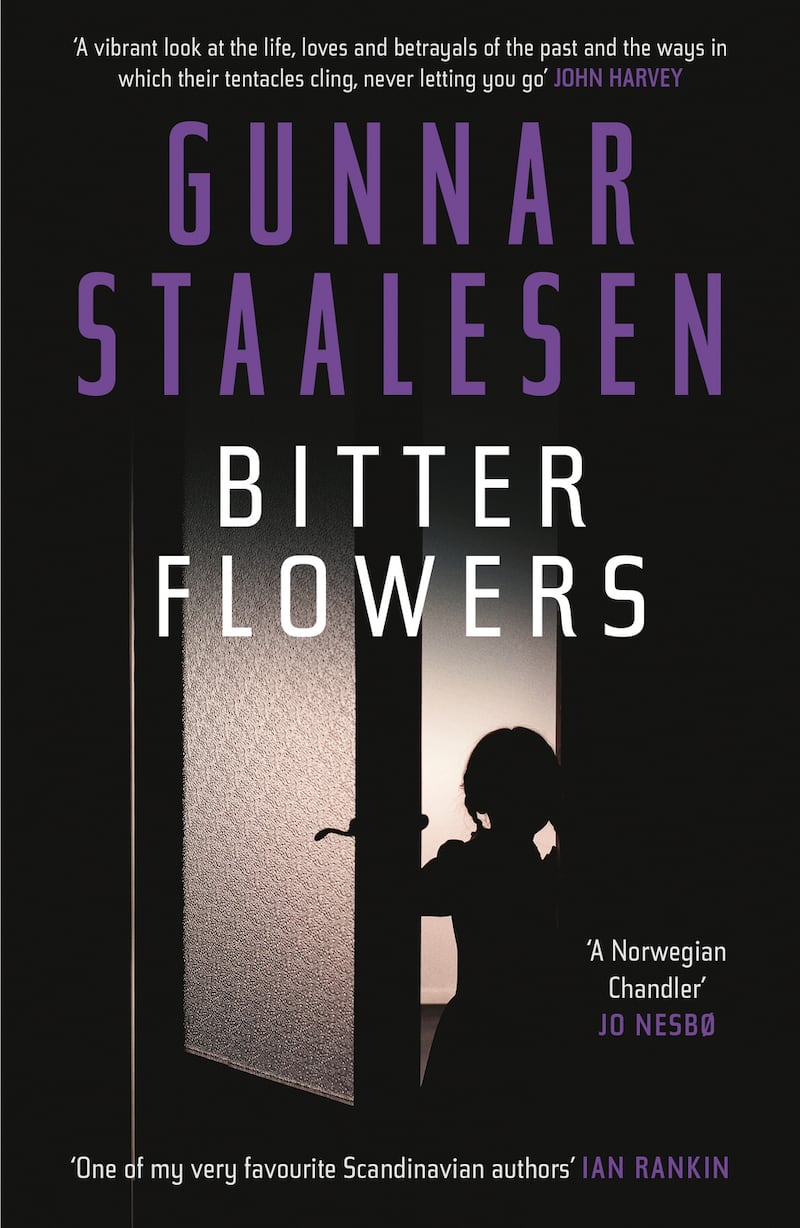Writers from the Scandinavian countries, as well as from Iceland or Finland, often grouped as Nordic Noir, are frequently asked: what is the difference between your books and classic crime novels? The usual answer from many of us will be: the presence of nature. Even if our novels are quite personal and different from each other, they all take place in a setting where nature is always present.
Classic mysteries or noir novels are often situated in big cities, such London, Los Angeles and Paris, or in picturesque small towns in the countryside. In Norway there are no real big cities. Even in the capital, Oslo, you can watch the green hills that surround it while standing in the very centre of the city.

In my own town, Bergen, we have our famous seven mountains close to the centre, our old harbour and the fjord leading up to it. There is a funicular railway five minutes from the Fish Market that takes you up to Mount Fløyen in six minutes, and from there you can go directly into the forest or higher up the mountains and take a three-hour walk along a ridge to the next mountain, Ulriken.
If my private detective, Varg Veum, drive north of Bergen, it will take him less than 30 minutes to come to a bridge crossing a fjord and further up north there are fjords and high mountains waiting for him in a landscape created by the ice leaving 12,000-13,000 years ago. In Norway, you always have nature around you, and it puts its mark on you.
We live in a period when the climate is changing, and this has consequences for nature as well. When I wrote my novel Bitter Flowers in 1991, now published this year in the UK, people were already starting to get nervous about climate change, as well as all the poisons human beings leave in nature through their garbage, both from private homes and from industry. Ecology was a term just coming into the language, and young people took part in big demonstrations against government policy on pollution. A similar protest is the backdrop to the riddles that Varg Veum is trying to solve in this novel.
In 2010 I published the novel We Shall Inherit the Wind (2015 in UK), which was inspired by a more visible conflict, related to the same problems, when wind farms are placed in open nature, changing the old landscape, killing birds and insects, making noise – but at the same time making green energy, which is important for the climate. At the moment I am writing my 20th novel about Varg Veum, in which salmon farming along the long Norwegian coast will play an important role, another conflict between green philosophy and moneymaking.
To me, nature has been a lifelong inspiration, both in my private life and in my writing. But I am not alone in this. Many writers are inspired by their local nature, and this is of course not unique to Nordic writers.
One of the authors that inspired me most as a writer is one of the American masters, Ross Macdonald. In his novel The Underground Man (1971), a big brush fire on the coast of California plays an important part in the plot. So too the big oil spill on the same coast in Sleeping Beauty (1973), which continues throughout the whole development of the novel. Another American crime writer who has described his local nature with huge insight is James Lee Burke, floating through the swamps of Louisiana. His novel The Tin Roof Blowdown (2007) is set during the catastrophic flood after Hurricane Katrina hit New Orleans in 2005. The Dry (2016) by the Australian writer Jane Harper carries the reader to an arid, drought-suffering region of Australia. Even everyday normal nature, like the windblown north-east coast of Scotland in Ian Rankin’s A Song for the Dark Times (2020), can influence the atmosphere of a novel.
In the work of all these writers, it is worth noting that the setting itself becomes a character in the stories. The catastrophic fires, droughts and hurricanes, the threats from the wind turbines and the oil platforms, the floods and the spilling of oil and toxic material in nature; they are all important elements in the stories these writers want to tell.
Writers have always been known to ask questions, to challenge the established customs of society. As an epitaph for his last novel, Ian Rankin quotes Bertolt Brecht: “In the dark times/ will there also be singing? / Yes, there will also be singing. / About the dark times.” The classic Norwegian playwright Henrik Ibsen wrote: “I only ask the questions. My job is not to answer.”
The authors are not wiser than their readers. My belief is that if you ask the right questions, the readers are more than capable of finding the right answers. But the questions have to be asked, and to many writers that is just the central challenge to themselves: find these questions, paint them clear enough for the readers to understand the problems and make their own choices out of that.
I have written about Varg Veum since the 1970s. During all these years he has reflected the changes in society, the weather and the climate. He has made his comments, in his sardonic way, and his sympathy is on the side of the younger generations, the people who have to survive the mistakes made by us and the past generations. But he is no prophet. Like all of us, he looks to the future with anxiety, and can just cross his fingers for better solutions for all mankind in the years to come. The future is – as always – a mystery waiting to be solved.
Bitter Flowers by Gunnar Staalesen, translated by Don Bartlett, is published by Orenda Books












